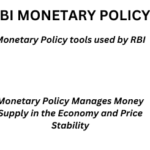Dark patterns;Internet Users: Basics Explained

Dark patterns—also known as deceptive design patterns—are interfaces designed to subtly trick Internet users into doing a task you otherwise normally wouldn’t do.
They’re strategies for misleading or tricking Internet users into doing something they don’t want to do. The user experience (UX) designer Dr. Harry Brignull coined the term “dark patterns” in 2010. As he explained, most people “don’t read every word on every page—you skim.” Some companies take advantage of this. They purposefully design pages to trick users.
It has far-reaching consequences. There are the dangers of lost money or privacy, of course. But many people also point to dark patterns as a cause for the spread of fake news.
Forced continuity: This is a common tactic that happens to most people. A company offers a free trial to a subscription service, but you must provide your credit/debit card information. After your free trial ends, the company continues to bill you.
Roach motel: In this circumstance, companies make signing up for a service—usually a subscription service—incredibly easy, but the process of leaving is difficult and confusing.
Misdirection: Companies will lead users into committing a task that’s of the company’s interest to deter users from another action. One way companies accomplish this is by making the “Buy” button larger than the “Not buy” button if a company wants you to purchase a programme.
Bait and switch — The interface appears to do one thing, but it actually does something else. A classic example of this is when a popup has an X button in the corner, but when you click it, it actually brings you to a website instead of closing the popup.





0 Comments